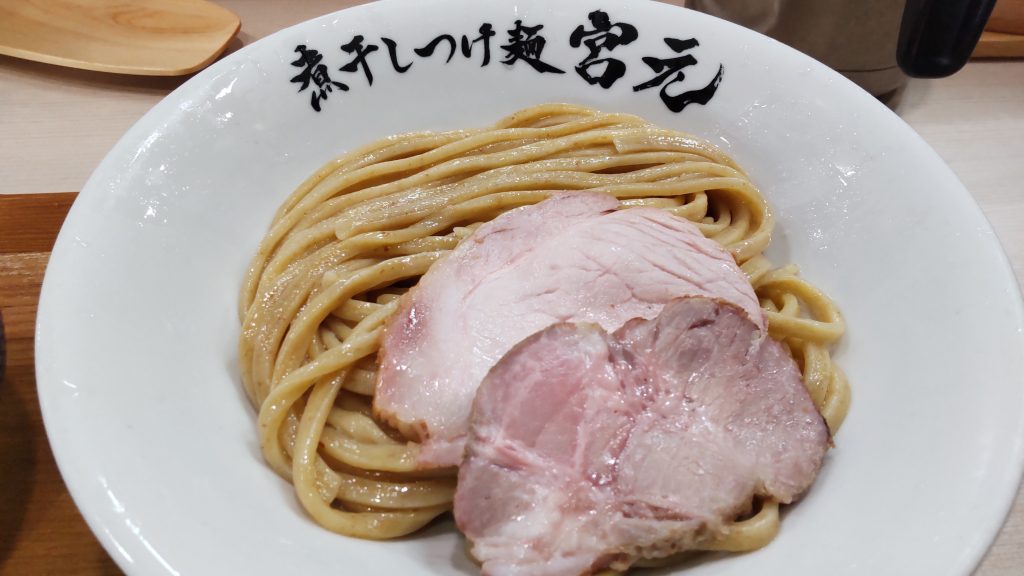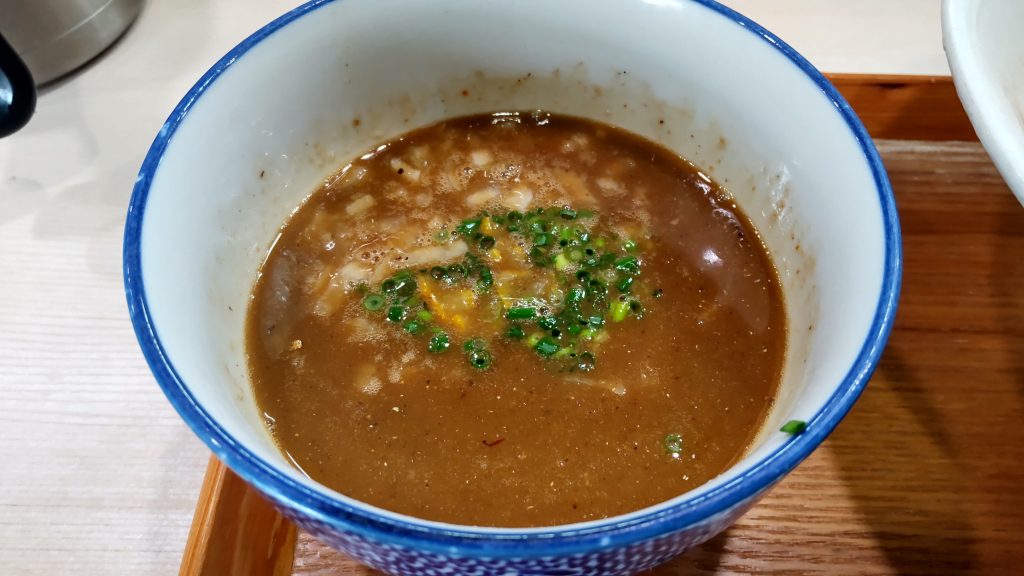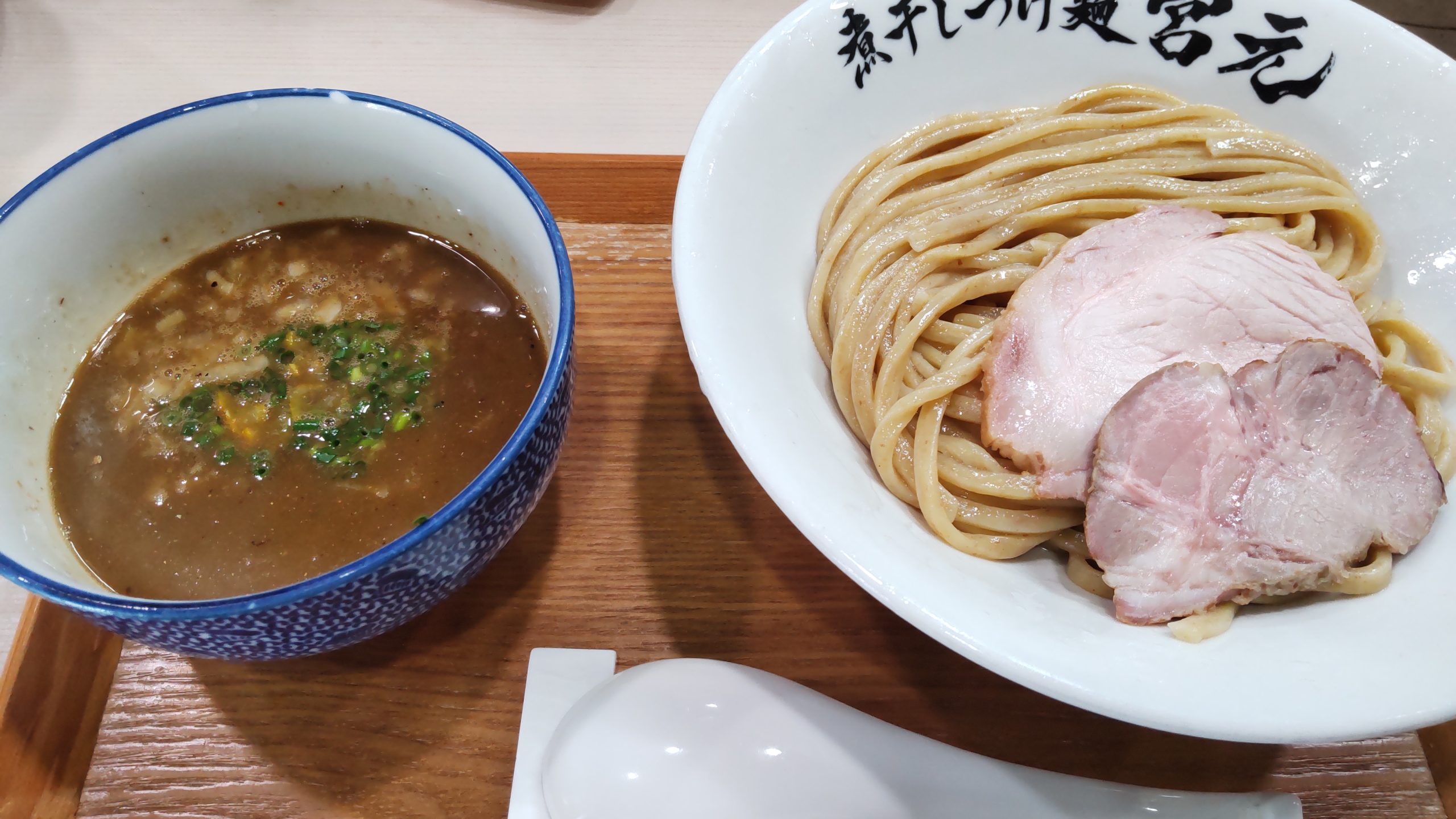| Summary: |  (4.5 / 5) (4.5 / 5) |
| Soup: |  (5.0 / 5) (5.0 / 5) |
| Noodles: |  (4.0 / 5) (4.0 / 5) |
| Location: |  (5.0 / 5) (5.0 / 5) |
Today, I went to a famous tsukemen (dipping ramen) restaurant located at JR Kamata Station.
It’s one of my favorite places to eat.
The standout feature of this restaurant is undoubtedly the soup made with niboshi (dried baby sardines).
While niboshi tsukemen has become quite common nowadays with many shops offering it, Miyamoto, the owner of this restaurant, is considered a leading figure in the industry. While fish-pork bone broth tsukemen is the more mainstream type, niboshi tsukemen has become a close second in Japan.
It’s just a 5-minute walk from JR Kamata Station, making it very conveniently located, and you can also reach it from Tokyo Station in about 20 minutes by train.
The appearance of the tsukemen is characterized by a rich soup and medium-thick noodles.
The noodles are the thicker type commonly seen in fish-pork bone broth tsukemen. They have a delightful aroma, and even eating them on their own brings great satisfaction.

At first glance, the soup looks like the typical fish-pork bone broth tsukemen soup.
But with just one bite, you can feel the intense flavor and umami of the niboshi, and it brings a sense of happiness.

One common issue with niboshi-based tsukemen is that it can retain a certain fishy smell in the soup. However, in the case of Miyamoto’s restaurant, there’s no trace of any unpleasant smell. You can fully enjoy the pure umami flavor.
However, it’s worth noting that people’s preferences for niboshi tsukemen can be quite polarized, so if you’re not a fan, you might want to avoid it.
The toppings include slices of chashu (braised pork), but they don’t necessarily complement the soup perfectly. Nevertheless, they are incredibly delicious on their own.
It’s definitely one of the must-visit renowned tsukemen shops.
Thank you for reading again today.
